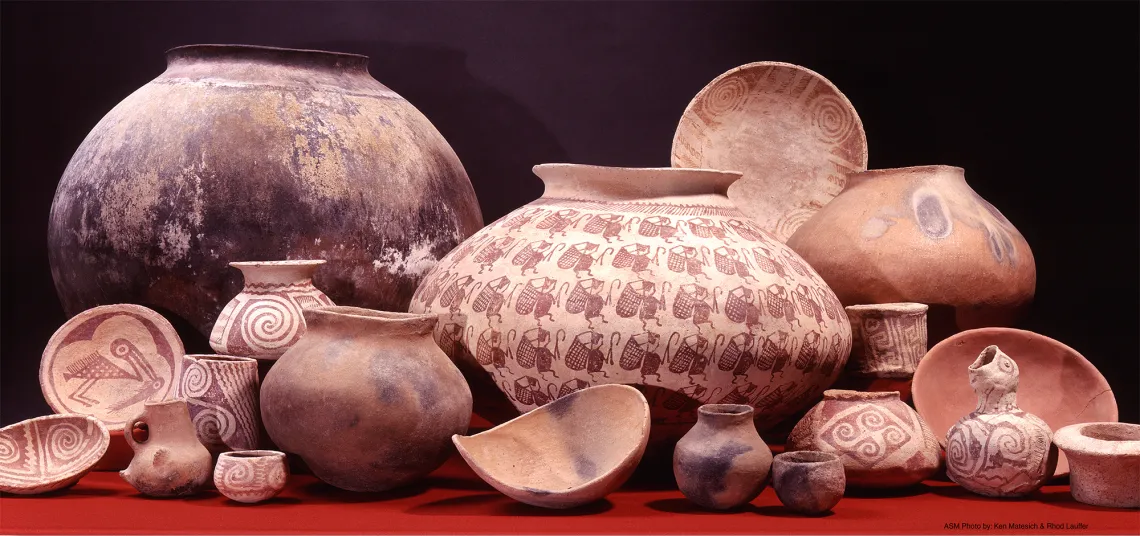
Pottery from the Norton Allen Collection
Hohokam Pre-Classic Period, ca. 450-1150 CE
Hohokam Classic Period, ca. 1150-1450 CE
(CE = AD)
Archaeologists do not, of course, know what these people called themselves, or how they viewed their community and ties with other settlements in the surrounding regions. In the Sonoran Desert regions of southern Arizona, researchers call this developing tradition the “Hohokam” culture. Hallmarks include brown or buff-colored pottery decorated with reddish, ochre (hematite)-based paint; a highly developed tradition of shell jewelry manufacturing that included carved pendants; a growing a variety of crops, including maize (corn), various beans, squashes, and cotton, which were often irrigated by a complex system of canals and reservoirs; as well as the collection of many wild plants, including mesquites, cactus buds, grass seeds, and agave. In some areas, agave was particularly important and was cultivated and harvested for the fibers in its leaves, which were processed to make thread and woven cloth. The core—or heart—of the agave plant was also roasted in large hornos (pit ovens) and eaten.
Hohokam settlements varied in size from small, single family farmsteads to large villages of several hundred people. Larger villages were organized around a central plaza with ceremonial structures. At first, the houses were individual structures constructed within or around a shallow depression excavated into the earth. Archaeologists refer to these as “pit houses” or “houses in pit” depending on the nature of the construction. The superstructure was made of branches and brush that were anchored to a center framework of large timbers, and covered with adobe mud plaster. Around A.D. 1150 to 1200, there was a shift towards surface structures with freestanding adobe walls that were often enclosed within a walled compound. Initially, larger communities featured ritual or ceremonial architecture in the form of large, open, oval-shaped depressions excavated into the ground surface, with soil mounded along the sides to create berms. These are believed to have been courts for playing a ball game.

Examples of Santa Cruz Red-on-buff pottery (A.D. 850-A.D. 950) with designs common to the Phoenix Basin and the surrounding region during the Late Colonial Period. Designs include images of birds and other animals--some quite abstract, open line hatchure, and fringed elements.
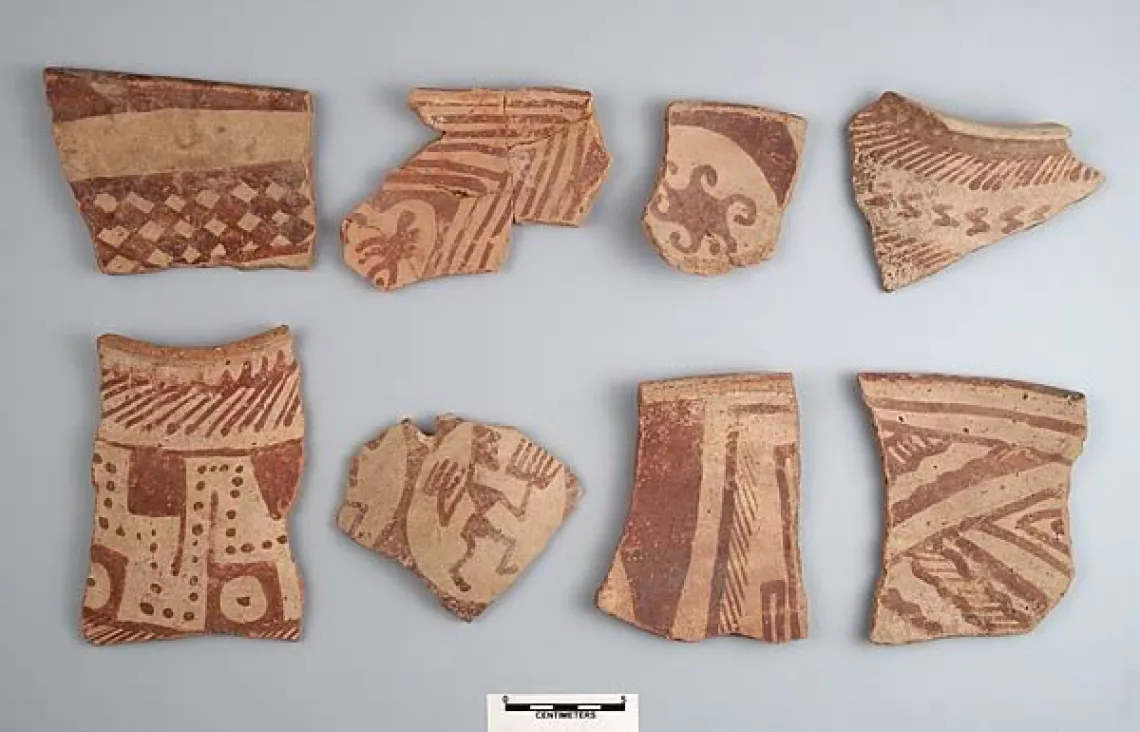
Examples of Sacaton Red-on-buff pottery (950-1150 CE) with designs common to the Phoenix Basin and surrounding areas during the Sedentary Period. These include large panels of open line hatchure, bounded fringe elements that form panels often laid out in a weave-like pattern, and large scale images of people and animals.
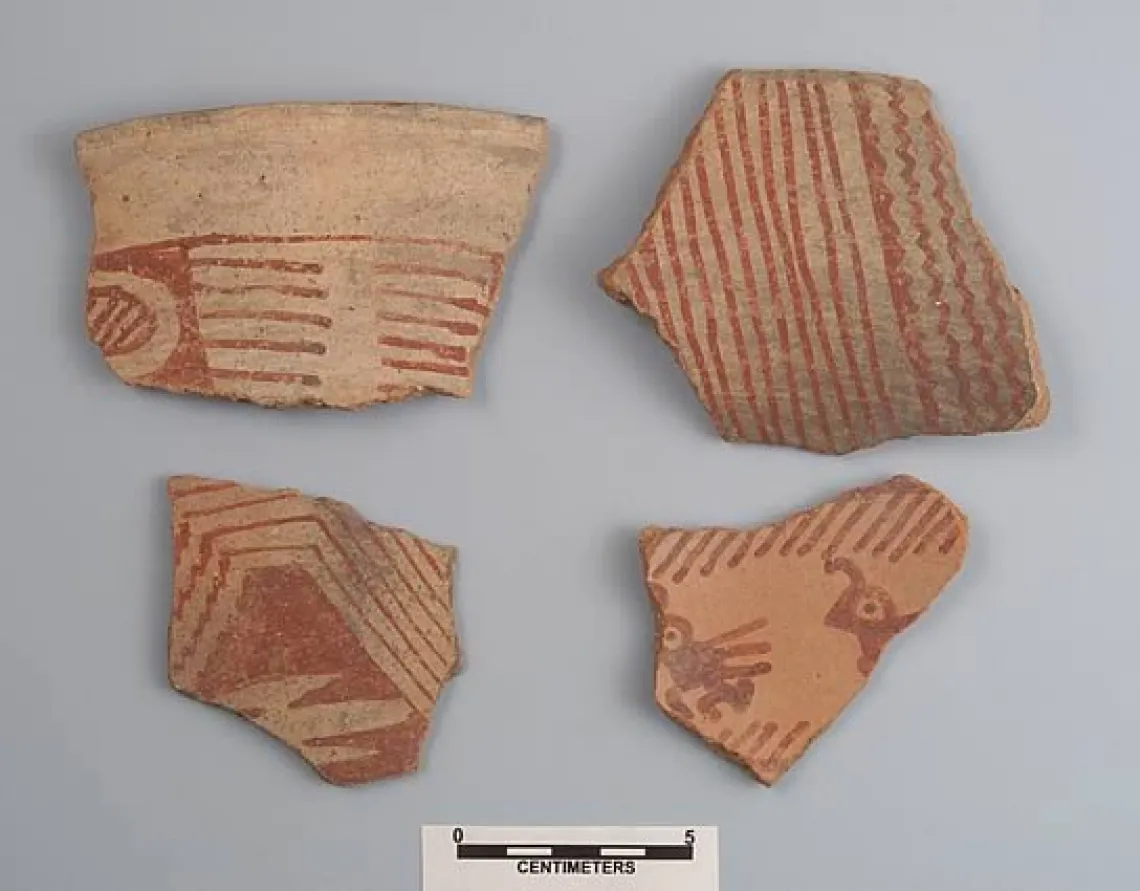
Examples of Rillito Red-on-brown pottery (850-950 CE) with designs common to the middle Santa Cruz River valley during the late Colonial Period. These include abstract and more realistic images of birds, open line hatchure, and fringed elements.
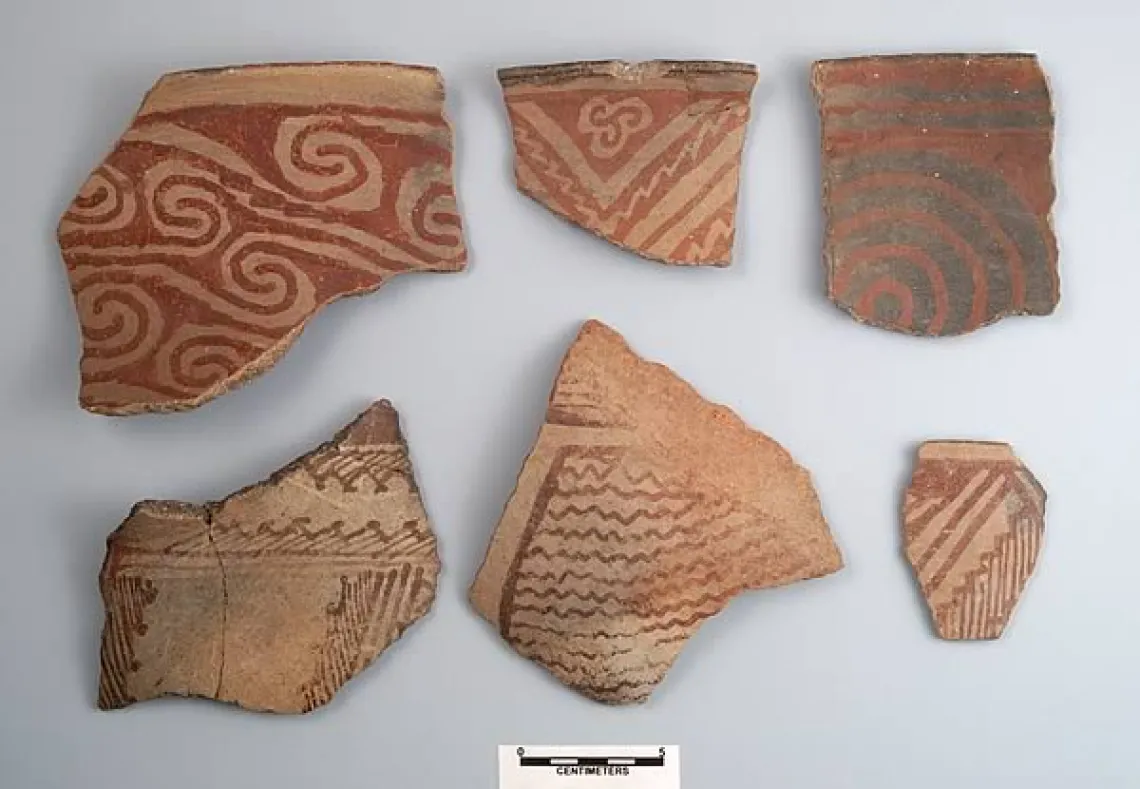
Examples of Rincon Red-on-brown pottery (950-1150 CE) with designs common to the middle Santa Cruz River valley during the Sedentary Period. These include large areas of open line hatchure, bounded fringe elements that form panels which are often laid out in a weave-like pattern.
The ball game tradition is well documented in Mesoamerica—the region of complex civilizations in central Mexico and further south into Guatemala and Honduras. While we do not know the specifics of the Hohokam ball game, there are descriptions of contests from central Mexico and Mayan regions, and variations of the game are played today throughout Central America. These ball games probably integrated communities into a larger social system that may have extended as far north as the Verde Valley and Flagstaff regions, and as far south as the Tucson area.
In some of the larger sites, there also developed a system of platform mounds that appear to have served in public ceremonies. The earliest of these were trash mounds that had a plaster coating applied over them to create a hard surface. No structures were built atop these mounds, so it seems that the activities were conducted in the open for all of the community to witness. Archaeologists have identified a change in this arrangement at about A.D. 1000, when fenced enclosures were built around the mounds. These enclosed mounds are distinctive in that they were not capped trash mounds, but specially constructed platforms with formal architectural features. The enclosing wall likely marks a significant change in the relationship between the community’s leaders and the general populace. Restricting access to the rituals conducted within the compound created a formal social distinction that was not apparent earlier.
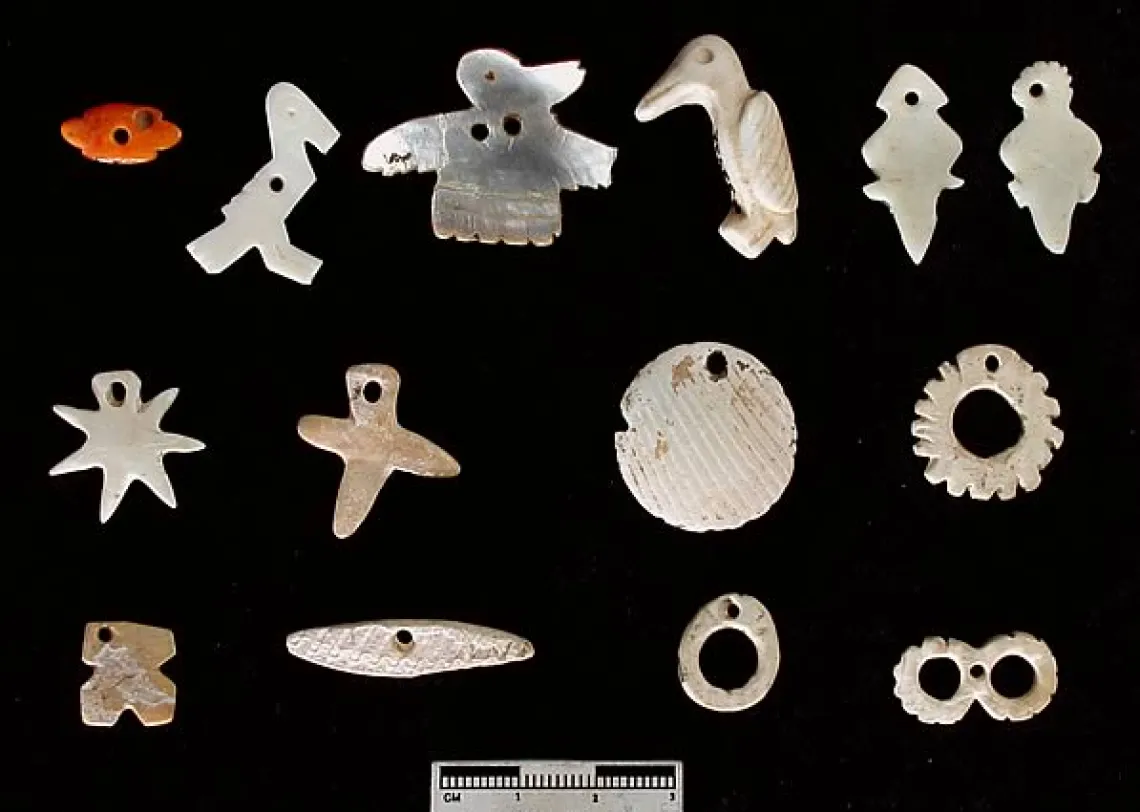
Selected examples that illustrate the great diversity of shell pendants created by the Hohokam.

Selected examples that illustrate the great diversity of shell pendants created by the Hohokam.
At the time of these changes in the social and ritual lives of these communities, there were a number of other significant cultural changes underway. By 1100 CE the use of the ball courts ends among the Hohokam. There were also changes in how people buried their dead and in the kinds of objects that were placed in the burial. Prior to 1200 CE, most Hohokam were cremated and their ashes gathered up, placed into a ceramic vessel, and buried. After this period, most people were buried as extended inhumations, often with one or more vessels (possibly containing food) and other personal belongings such as jewelry and their tools. We also see a gradual concentration of previously dispersed populations into a few relatively large communities structured around the central platform mounds. These communities were typically located along major irrigation canals or on the terraces above rivers. How these communities interacted is currently the subject of considerable debate and study. Settlements along the same irrigation system probably shared some level of social and administrative hierarchy. There is limited evidence for regional integration, and it appears to have been relatively informal.
Sometime during the later half of the 14th century CE, the Hohokam of the Phoenix Basin entered a period of social disruption and community disintegration. There appear to be several causes including drought, flooding, and warfare. Other areas, including the Tucson Basin, were swept up in this breakdown and turmoil over the successive generations. By 1400 CE, the size of the Hohokam population had decreased dramatically, and the settlements had shrunk in size and were dispersed across the landscape once again.
During the subsequent Protohistoric Period, which extended to the arrival (or “entrada”) of the Spanish in southern Arizona during the closing years of the 17th century, there was considerable change in both the social and material world of the native populations of southern Arizona. The tradition of decorating pottery with painted designs was largely lost. The ceramics become thin-walled plain and red-slipped vessels with smoothed, often lightly polished, surface. Although shell continued to be used for jewelry, only simple beads and whole shell pendants were created. Houses were fairly ephemeral brush structures, suggesting that settlements were short-lived and the population fairly transient. The degree and nature of these changes have led some archaeologists to suggest that the Hohokam abandoned the region and that people from the south migrated into the area prior to the arrival of the Spanish.





